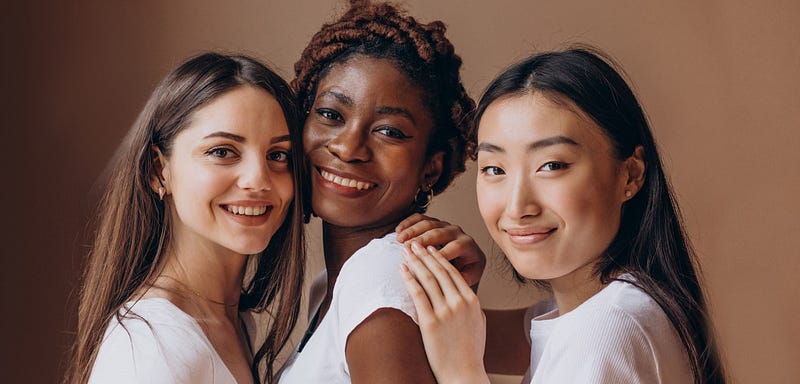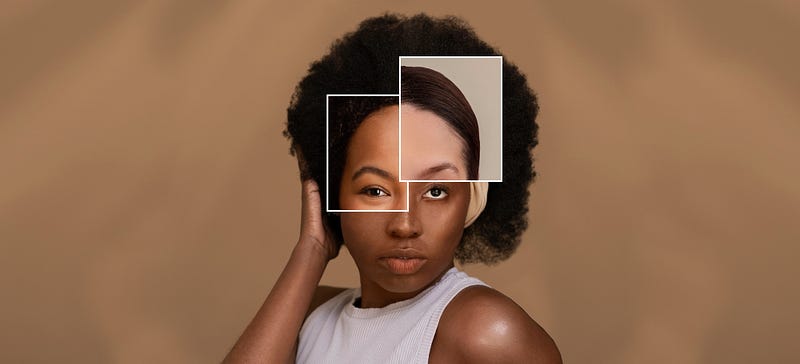Embracing Our Skin: A Journey Through Color Perception
Written on
Chapter 1: The Quest for Ideal Skin
Throughout my life, I’ve struggled with acceptance of my skin tone. About two decades ago, I began applying sunless tanning creams in a bid to achieve a complexion reminiscent of Tia Carrere’s beautiful hue. Reflecting on those days, I can’t help but cringe at the results; I ended up resembling an Oompa Loompa, complete with the scent of stale pretzels. Fast forward to today, and while I still grapple with my skin’s appearance, I’ve made some progress.
During my sunless tanning phase, another young woman across the globe was battling her own skin color insecurities, opting for 'whitening' creams instead of basking in the sun. The irony is that the only consensus we would have reached is that I appeared ridiculous in orange.
Years later, my use of tanning products continues, while the market for skin-whitening creams has expanded significantly. Thankfully, advancements in self-tanning formulas have improved, allowing me to achieve a subtle tint rather than the drastic shades of my youth. Yet, my choice to use these products often raises eyebrows; when I skip the tanning cream, people frequently inquire if I’m unwell. The dilemma between being perceived as sickly without the tint or enduring past comments about my pallor is frustrating.
I’ve endured countless jokes about my fair complexion, such as "Your teeth have more color than your legs" and "You’re so pale you glow in the dark." While I understand the humor, it’s hard not to feel self-conscious. My skin could be classified as ‘transparent,’ and on particularly sunny days, I resemble a boiled lobster rather than someone who has enjoyed the sun. While some may bask in the sun’s embrace, I find solace in my trusty aloe vera.
Thus, I continue the practice of dyeing my skin. Without the tint, my visible veins might delight a phlebotomist, but they contribute to my ‘sickly’ appearance. I jest that I’m not entirely white; perhaps I’m closer to clear. Thankfully, the tanning creams provide the needed color to my otherwise translucent skin.
In a world where I’m not alone in altering my skin, it’s noteworthy that this is a billion-dollar industry.

Chapter 2: The Billion-Dollar Market
The global self-tanning market currently stands at $1.5 billion and is projected to reach $3.2 billion by 2030, with the U.S. contributing around $400 million. Conversely, the market for skin-whitening products is far more extensive, valued at $10 billion and expected to grow to $16 billion by 2030.
This indicates a widespread dissatisfaction with one’s natural complexion, driven by various factors. For me, it’s an internal conflict between not wanting to appear unhealthy and longing for that enviable Tia-Carrere glow. Others may feel societal or familial pressures to conform to certain beauty ideals. Colorism, unfortunately, continues to be a significant issue in numerous cultures.
Skin lighteners have been particularly prevalent in Africa and among Black communities, where they remain significant consumers of these products. Surprisingly, colorism is deeply embedded in Asian cultures as well. Research from the University of Singapore reveals that East Asia exhibits the highest levels of skin tone bias globally, with women being particularly affected.
This bias is often rooted in traditional beliefs but has been exacerbated by modern advertising that equates fair skin with success in various aspects of life, including finances and relationships.
Perhaps we are witnessing a shift, as people begin to choose their skin tones free from societal pressures. Notably, interest in sunless tanning is rising in China, where usage is expected to increase by nearly 8%, reaching $130 million by 2030.

Chapter 3: The Dangers of Chemical Choices
When it comes to skin products, sunless tanners are relatively safe in comparison to tanning beds and UV rays. However, skin-lightening agents present a different set of risks.
The market is evolving, and methods of skin lightening are diversifying beyond creams. In Asia, glutathione injections have gained popularity as an antioxidant treatment. Unfortunately, reports from the Philippines regarding skin disorders and other health issues have led to the condemnation of such practices by health authorities, yet demand remains high.
The most common skin-lightening method continues to be inexpensive creams, many of which contain hazardous ingredients like mercury and hydroquinone.
Major companies, such as Procter & Gamble and Unilever, typically sell these products primarily in Asia and Africa. However, some smaller manufacturers from regions like China and Pakistan produce more dangerous items that contain harmful substances not listed on the packaging.

Chapter 4: A Shift in Advertising and Attitudes
Despite the growing markets for tanning and lightening products, there’s a glimmer of hope. Advertising campaigns are evolving, moving away from the explicit messages of the past that linked skin whitening to professional and personal success.
Several brands, particularly in Malaysia, have launched campaigns promoting diversity in skin tones, with companies like Dove and Sephora leading the charge.
The Black Lives Matter movement has also shed light on this issue, holding brands accountable for promoting racial justice while simultaneously marketing skin-whitening products. Under scrutiny, companies like Unilever and L’Oreal have adjusted their language, moving away from terms like “white,” “light,” and “fair” in their beauty products.
Perhaps I should also reconsider my self-description and refrain from calling myself translucent.
We’ve made strides toward appreciating the beauty of all skin colors, particularly in the past decade. However, with these multi-billion-dollar markets still expanding, there’s clearly more work to be done. I recognize that I can’t criticize or advise others against altering their skin while I still engage in the practice myself, wishing for a complexion that aligns more closely with the beauty ideals I see in media and advertising.